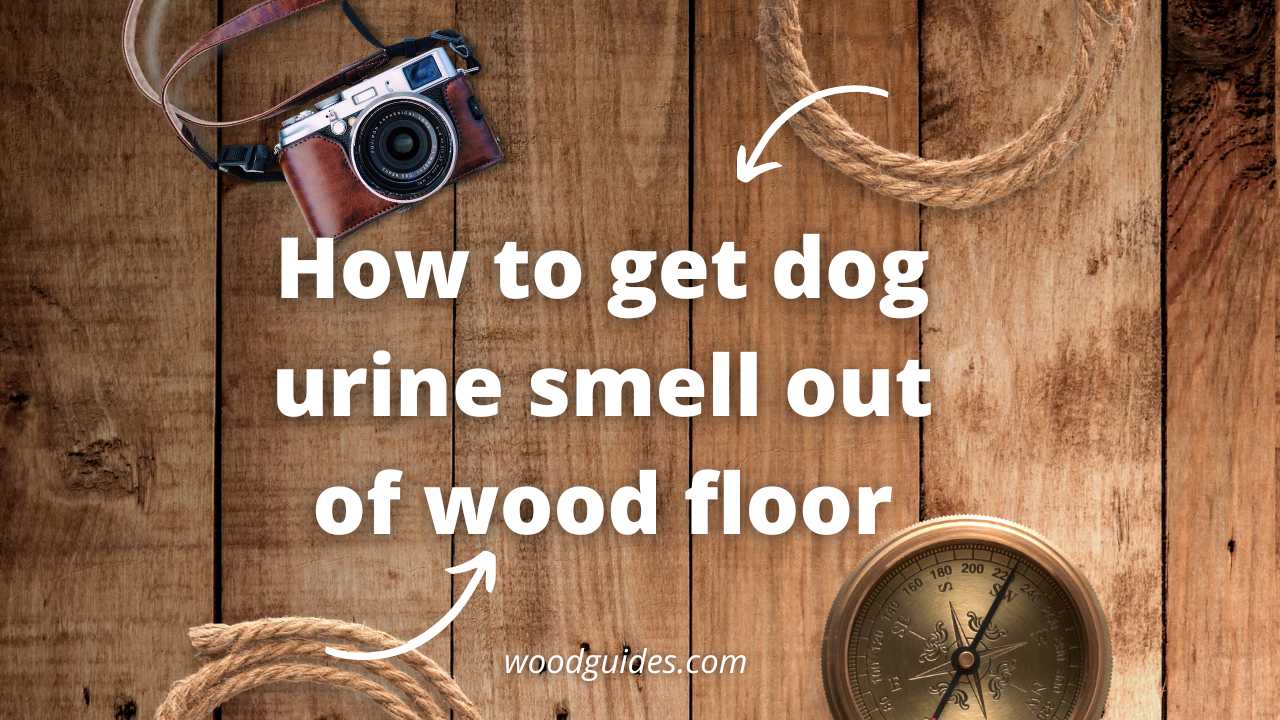Say farewell to stubborn How to get dog urine smell out of the wood floor by following our step-by-step instructions. Enjoy a fresh-smelling home once again!
As a proud homeowner and dog lover, I face the challenge of maintaining a clean and fresh-smelling home daily. One of the most daunting tasks is figuring out how to get dog urine smell out of wood floors. It’s a common issue for pet owners, but one that can be resolved with the right approach. Through my journey, I’ve gathered a wealth of information and practical tips to help you tackle this problem head-on. Let’s dive into the ins and outs of eliminating dog urine odor from wood floors, ensuring your home remains a welcoming and hygienic space for both you and your furry friend.
Understanding the problem: Why does dog urine smell how to get dog urine smell out of wood floor?
The root of the problem lies in the nature of both the urine and the wood flooring. Dog urine contains ammonia, bacteria, hormones, and uric acid. When a dog urinates on wood floors, the urine can penetrate the wood’s surface, embedding the odor deep within. Over time, as the urine decomposes, it releases ammonia and other compounds, exacerbating the odor. Furthermore, the acidic nature of urine can damage the wood’s finish, making it more porous and susceptible to further staining and odor penetration. Understanding this dynamic is crucial in addressing the issue effectively.
Some Effective Ways to Remove Dog Urine Smell on Wood Floors
1. Absorb the Urine: As soon as you notice the urine on the wood floor, use paper towels or a clean cloth to absorb as much of it as possible. This will prevent it from seeping deeper into the Wood Floor and causing more damage.
2. Use White Vinegar: Mix equal parts of white vinegar and water in a spray bottle and spritz it onto the affected area. Let it sit for a few minutes before wiping it off with a clean cloth. The acidic properties of vinegar can help neutralize the smell and break down any remaining urine.
3. Baking Soda: Sprinkle baking soda over the affected area and let it sit for several hours or overnight. Baking soda is known for its natural odor-absorbing properties and can help eliminate any lingering smells from dog urine.
4. Hydrogen Peroxide: Mix equal parts of hydrogen peroxide and water in a spray bottle and apply it to the affected area. Allow it to sit for 10-15 minutes before wiping it away with a damp cloth.
5. Enzyme Cleaner: Enzyme-based cleaners are specifically designed to break down proteins found in urine, effectively eliminating both the smell and stain. Follow the instructions on the cleaner carefully, as some may require multiple applications for tough stains.
6. Sanding: If the urine has deeply penetrated into your wood floor, sanding may be necessary to remove any remaining smell. This should only be done by a professional or someone with experience in handling wood floors.
7. Sealant: After cleaning, consider applying a sealant or polyurethane coating to your wood floor to protect it from future accidents and make cleaning up easier. Be sure to follow the instructions on the sealant carefully and allow it to dry completely before allowing anyone to walk on the floor.
8. Professional Cleaning: If all else fails, it may be necessary to hire a professional cleaning company that specializes in removing pet urine stains and odors from wood floors. They have access to more powerful cleaners and equipment, as well as experience in handling tough stains. This may be the best option if the damage is severe or if you have multiple pets in your home.
Remember, prevention is always better than cure when it comes to removing dog urine smell from wood floors. Regularly potty training your dog and cleaning up accidents immediately can help prevent stains and odors from setting in on your precious hardwood floors.
The importance of immediate action: Why you should address dog urine odor promptly
Acting swiftly is paramount when dealing with dog urine on wood floors. The longer the urine sits, the deeper it penetrates into the wood, making it more challenging to eliminate the odor. Immediate action minimizes the damage to the wood and prevents the odor from becoming more ingrained. Additionally, prompt cleanup discourages your pet from re-marking the area, as dogs are often attracted to spots where they’ve urinated before. By addressing the issue quickly, you’re not only protecting your floors but also helping to break your dog’s bad habits.
Assessing the damage: Identifying the extent of the urine penetration
Before diving into the cleanup process, it’s essential to assess the damage. If the urine is fresh, the penetration might be minimal, confined to the surface or just below it. Older stains, however, may have seeped deeper into the wood, reaching the subfloor in some cases. To gauge the extent of the damage, you might need to inspect the area closely, looking for discoloration or warping of the wood. In severe cases, you might even notice a sponginess underfoot, indicating significant damage. This assessment will guide your cleaning strategy, helping you choose the most effective approach.
Preparing the area: Clearing the affected space and ensuring proper ventilation
Proper preparation is crucial for effective cleanup. Start by removing any furniture or rugs from the affected area to ensure complete access to the stained spot. Next, open windows or use fans to ventilate the area well, as some cleaning solutions can have strong odors or release fumes. Proper ventilation not only helps in reducing the potency of these odors but also aids in the drying process, which is vital for preventing further damage to your wood floors.
Natural remedies: Using household items to eliminate dog urine odor
For those who prefer a more natural approach, several household items can be effective in tackling dog urine odor. Vinegar, a natural deodorizer, can neutralize the ammonia in urine, helping to eliminate the smell. A solution of one part water and one part vinegar can be applied to the affected area and left to sit for a few minutes before wiping it up. Baking soda is another excellent odor absorber. After cleaning the area with vinegar, sprinkling baking soda over the spot and letting it sit overnight can help absorb any lingering odors. In the morning, vacuum up the baking soda, and you’ll notice a significant reduction in odor.
Commercial products: Exploring effective cleaners specifically designed for wood floors
For those looking for a more robust solution, numerous commercial products are designed specifically for removing pet urine odor from wood floors. These cleaners often contain enzymes that break down the urine molecules, effectively neutralizing the odor. When choosing a commercial cleaner, look for products that are safe for use on wood floors to avoid damaging the finish. It’s always wise to test the cleaner on a small, inconspicuous area first to ensure it doesn’t discolor or damage your flooring.
Deep cleaning techniques: Scrubbing and sanitizing the affected area
Sometimes, a deeper cleaning might be necessary, especially for older or more stubborn stains. After removing the initial urine spot and treating the area with a vinegar solution or commercial cleaner, you may need to gently scrub the surface with a soft-bristled brush. This can help remove any remaining residue and further penetrate the cleaning solution into the wood. Following this, applying a sanitizing solution, such as a mixture of water and hydrogen peroxide, can help eliminate any lingering bacteria and ensure the area is thoroughly disinfected.
Preventive measures: How to avoid future incidents and protect your wood floors
Preventing future incidents is just as important as addressing the existing problem. One effective strategy is to apply a sealant to your wood floors, which can protect them from damage and make cleanup easier. Additionally, training your dog to use the bathroom outside or establishing a designated indoor area with training pads can help minimize accidents. Regularly trimming your dog’s nails can also reduce scratches on your wood floors, keeping them in better condition.
Seeking professional help: When to call in the experts for stubborn urine odor
In some instances, despite your best efforts, the urine odor persists, indicating a deeper penetration that DIY methods can’t address. This is when it’s wise to call in professional cleaners who specialize in pet odors. These experts have the tools and techniques to tackle deep-set odors, even those that have reached the subfloor. While professional cleaning can be more costly, it’s a worthwhile investment to restore your wood floors and eliminate the odor completely.
Additional tips and tricks: Extra measures to combat dog urine odor on wood floors
Beyond the methods already discussed, there are additional steps you can take to combat dog urine odor. Regularly cleaning your floors with a pH-neutral cleaner can maintain their condition and prevent odors from setting in. Placing mats or rugs in high-traffic areas can also protect your floors and make cleanup easier. Additionally, investing in a high-quality vacuum cleaner designed for pet owners can help you keep your floors clean and free of pet hair and dander, which can contribute to odors.
Finally, consider using a dehumidifier to control humidity levels in your home, as high levels of humidity can make odors more prevalent and difficult to eliminate. By incorporating these tips and tricks into your cleaning routine, you can keep your wood floors looking and smelling fresh for years to come.
Frequently Asked Questions
How long does it take for the urine odor to go away?
The time it takes for the urine odor to dissipate can vary depending on the severity of the stain, the depth of penetration, and the cleaning method used. Generally, with prompt and thorough cleaning, you should notice a significant reduction in odor within a few days.
Can dog urine stains be removed from wood floors?
Yes, many dog urine stains can be lightened or removed entirely from wood floors using the methods described above. However, deep-set or old stains may require refinishing or professional treatment to completely remove them.
Is it safe to use bleach on wood floors to remove urine odor?
It is generally not recommended to use bleach on wood floors, as it can damage the wood and its finish. Opt for solutions specifically designed for wood floors or natural alternatives like vinegar and baking soda.
Conclusion: Maintaining a fresh and odor-free environment for you and your furry friend
Dealing with dog urine odor on How to get dog urine smell out of wood floor can be a challenge, but it’s one that can be overcome with the right approach. By understanding the problem, acting promptly, and utilizing both natural and commercial solutions, you can effectively eliminate the odor and protect your floors.
Remember, prevention is key, and taking steps to avoid future incidents will help maintain a fresh and welcoming home. Should you face a stubborn odor that resists all efforts, don’t hesitate to seek professional help. With these tips and tricks, you and your furry friend can enjoy a clean, odor-free environment for years to come.





